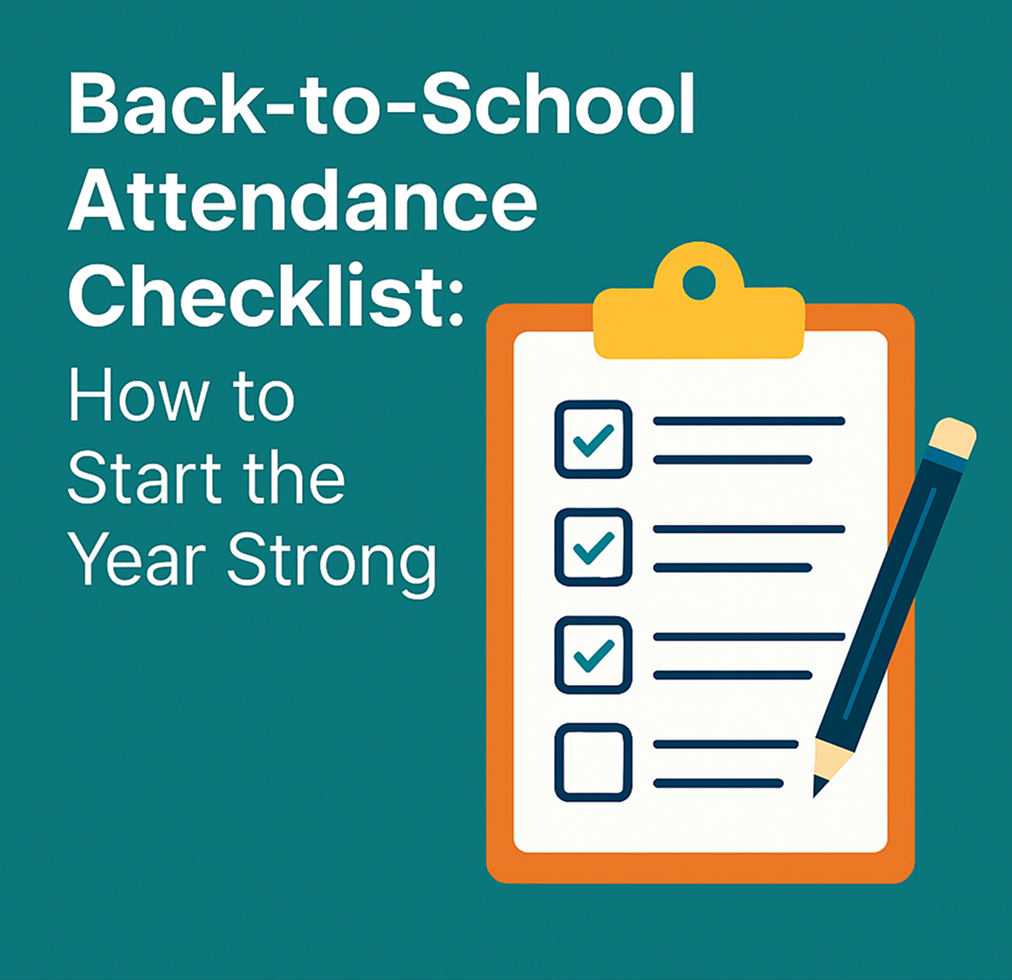
Every attendance strategy is part of a larger workflow. See how Nudge helps your team See the data, Act on it, and Track the results on our Solutions page ›
Overview:
As the school year kicks off, setting the right attendance foundation can make or break your district’s outcomes. From boosting ADA to preventing chronic absenteeism, this checklist outlines the key steps successful districts take in the first 30 days — whether you’re using a tool like Nudge or not.
1. Review Last Year’s Attendance Data
Why it matters:
Patterns repeat. Students with poor attendance last year are at high risk of doing it again.
Checklist:
- Identify students who were chronically absent or truant last year
- Segment by grade level, school site, and demographic group
- Flag those students in your SIS or internal tracker
- Review which interventions (if any) they received and what worked
2. Prepare Your Attendance Notifications
Why it matters:
Early outreach builds family awareness and trust — before compliance letters are triggered.
Checklist:
- Review and update truancy letter templates for accuracy and tone
- Translate letters into your top languages
- Set thresholds for when letters are triggered (e.g. 3 unexcused absences)
- Align with state timelines (e.g. SARB requirements in California)
- Make sure you can track what’s been sent, when, and to whom
3. Organize Your Intervention Strategy
Why it matters:
Interventions are more effective when they’re timely, documented, and assigned clearly.
Checklist:
- Define your Tier 1, 2, and 3 attendance interventions
- Create a weekly intervention review cadence (by site or team)
- Assign staff to monitor intervention follow-through
- Use a centralized method to track which students received what support
4. Set Up a Weekly Attendance Rhythm
Why it matters:
Weekly routines help teams stay proactive instead of reactive.
Checklist:
- Designate a weekly attendance review day (e.g. every Tuesday morning)
- Review absentee trends by school and grade
- Flag new students trending toward chronic absenteeism
- Take immediate action before they hit thresholds
5. Communicate with Families Early and Often
Why it matters:
Families are partners in improving attendance — but only if they know what’s happening.
Checklist:
- Send a beginning-of-year message about your attendance policies
- Share how families can check their student’s attendance
- Make sure guardians know who to contact if issues arise
- Avoid punitive tone — frame outreach as support, not discipline
Bonus: Automate What You Can
Why it matters:
Manual systems don’t scale. The more you automate, the more time your team gets back.
Checklist:
- Explore tools that sync with your SIS to automate letters
- Set rules once — let the system handle sending
- Track which interventions improve attendance
- Focus staff time on the students who need it most
Back-to-School Attendance Checklist: How to Start the Year Strong




